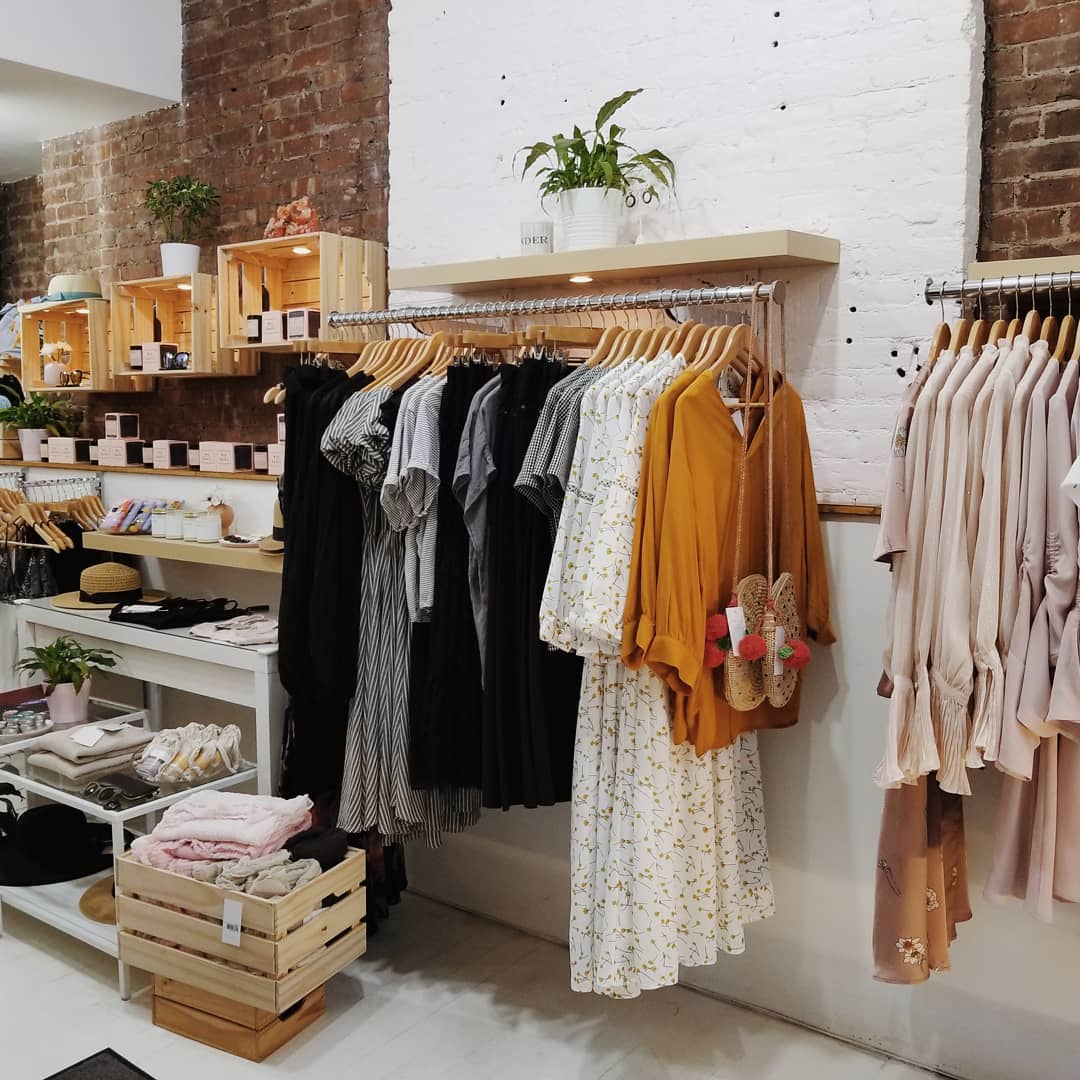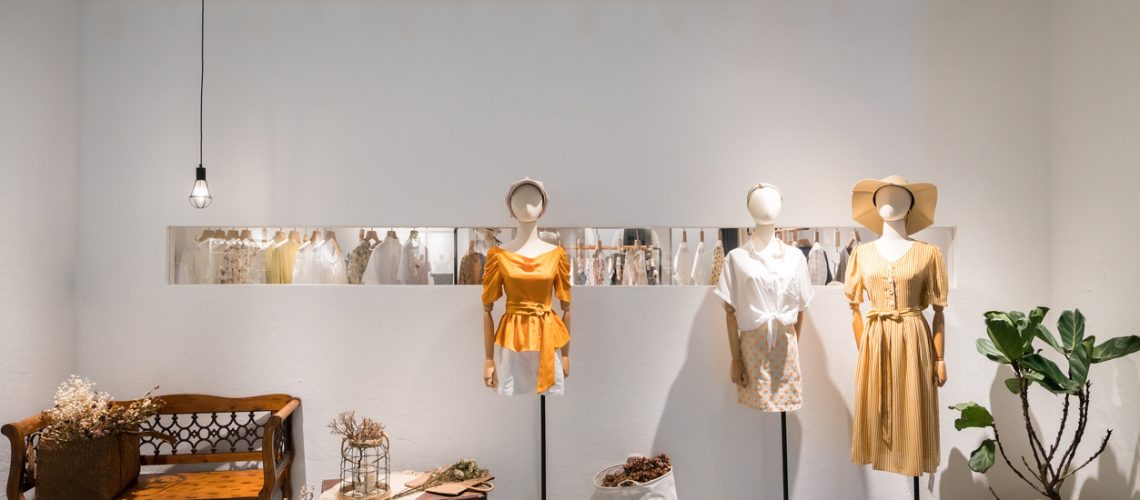Unveiling the Secrets Behind Budget-friendly Boutique Fashion
Unveiling the Secrets Behind Budget-friendly Boutique Fashion
Blog Article
Lasting Fashion: How Eco-Friendly Garments Is Forming the Future of Design
As the style sector encounters boosting examination over its environmental influence, the surge of lasting fashion offers an encouraging choice that lines up style with eco-friendly duty. boutique fashion. Exactly how does this movement absolutely influence the future trajectory of style, and what obstacles lie in advance in its extensive adoption?
Cutting-edge Sustainable Materials
As the fashion business grapples with its ecological effect, innovative lasting materials have actually become a crucial solution for minimizing ecological impacts. Among one of the most appealing products are those obtained from all-natural, sustainable sources, such as organic cotton, hemp, and bamboo. These products not just minimize dependency on fossil gas however additionally reduce hazardous pesticide use and water consumption. Organic cotton, for example, makes use of considerably less water than standard cotton and removes the demand for hazardous chemicals, consequently preserving dirt health and wellness and biodiversity.
Along with plant-based products, innovations in biofabrication have led to the development of lab-grown textiles. Mycelium leather, derived from mushroom roots, presents a naturally degradable and flexible option to animal leather. Its production results in significantly lower carbon emissions and water usage, making it a more lasting alternative for stylist looking for to line up with green techniques.
Recycled products are likewise acquiring grip, with polyester made from recycled plastic bottles standing for a substantial innovation. This technology not only diverts plastic waste from seas and garbage dumps but likewise lowers energy consumption contrasted to generating virgin polyester. Together, these materials emphasize the possibility for a much more sustainable style market, paving the means for eco mindful design and manufacturing.
Eco-Conscious Manufacturing
Building on the technologies in lasting materials, the garment industry is additionally re-evaluating its manufacturing procedures to additionally decrease ecological effect. Trick methods include decreasing water consumption, lowering carbon exhausts, and getting rid of dangerous chemicals. By taking on closed-loop systems, producers intend to recycle water and power efficiently, dramatically decreasing waste. The assimilation of renewable resource sources, such as solar and wind power, right into production facilities better curtails dependence on nonrenewable fuel sources.
One more important facet is the reduction of harmful chemicals commonly made use of in dyeing and completing textiles. Eco-conscious makers are shifting in the direction of plant-based dyes and waterless dyeing modern technologies, which not just secure neighborhood ecological communities but likewise enhance employee safety and security. Innovations like digital printing decrease material waste and energy usage, supplying a cleaner choice to typical methods.
Furthermore, transparency and traceability have ended up being vital. With the improvement of blockchain innovation, business can currently supply in-depth understandings into their supply chains, making sure honest and ecologically friendly practices at each action. This openness develops consumer count on and encourages brands to keep high sustainability criteria. As the need for eco-conscious products grows, suppliers are urged to introduce, making sure that the future of fashion is both trendy and lasting.
The Increase of Upcycling
Upcycling, a transformative practice in lasting fashion, entails artistically repurposing discarded products right into new, high-quality products. This innovative strategy not only reduces waste however also reduces the demand for basic materials, thereby decreasing the environmental effect of clothing manufacturing. By reimagining and reconstructing existing things, designers and style brand names are able to instill creativity into their collections while promoting environmental duty.

Furthermore, the upcycling activity has actually encouraged local business and independent designers, who frequently lead in innovation as a result of their dexterity and creativity. By maximizing the bountiful accessibility of unused products, these entities add to a circular economic situation, demonstrating that style can be both lasting and elegant. Through upcycling, the sector takes considerable strides in the direction of a much more responsible and aware future.
Thrift Society's Impact
The expanding thrift society considerably improves the landscape of sustainable style, highlighting the relevance of mindful intake. This cultural change encourages consumers to welcome used apparel, thus lowering the need for new garment manufacturing and minimizing explanation environmental influence. Thrift buying not just extends the lifecycle of apparel but likewise decreases the carbon footprint connected with production, transferring, and disposing of clothing.
A vital aspect of thrift society is its democratization of style. By offering a broad range of designs from numerous eras at cost effective rates, thrift stores make fashion obtainable to a more comprehensive audience. This access promotes a sense of individuality and creative thinking, as consumers mix and match special pieces to curate individualized closets without adding to the fast style cycle.
Moreover, second hand society promotes circularity in fashion, straightening with the concepts of a round economy. As even more consumers and developers welcome thrift culture, the style sector is obliged to adjust, integrating lasting practices to fulfill the expanding need for eco-conscious alternatives.

Future Trends in Fashion
Fashion's development is increasingly shaped by technical developments and sustainability-driven efforts. As consumers end up being a lot more eco aware, the market is reacting with groundbreaking advancements that redefine the future of style. One famous trend is the increase of digital fashion, where virtual garments can be used in augmented truth atmospheres, substantially decreasing material waste. This shift not only satisfies the digital-savvy consumer however likewise decreases the ecological footprint commonly connected with garment manufacturing.
Furthermore, the combination of blockchain modern technology provides brand-new possibilities in openness and traceability, enabling consumers to confirm the sustainability credentials of their apparel. boutique fashion. This makes sure accountability in supply chains and advertises honest sourcing techniques. 3D printing is yet an additional innovation that promises to transform producing processes by enabling on-demand production, thereby lowering excess supply and waste
As these modern technologies develop, they are positioned to useful content transform the style landscape, combining style with sustainability. The future of style, for that reason, exists in a seamless blend of technology, innovation, and environmental obligation.
Conclusion
The transformation of the fashion sector through lasting practices suggests a crucial shift in the direction of ecological accountability. This advancement not just aligns style with eco-friendly sustainability but likewise establishes a precedent for future trends concentrated on responsibility and innovation.
As the fashion industry faces enhancing analysis over its ecological impact, the increase of lasting style offers an appealing option that straightens design with ecological obligation.As the fashion market grapples with its ecological influence, innovative sustainable materials have emerged as an essential solution for decreasing environmental impacts. With each other, these products emphasize the possibility for an extra lasting style sector, leading the means for eco aware layout and manufacturing.
Building on the developments in sustainable materials, the fashion market is likewise re-evaluating its manufacturing processes to even more decrease environmental impact. boutique fashion.Upcycling, a transformative practice in lasting style, entails artistically repurposing disposed of materials into new, top quality products
Report this page